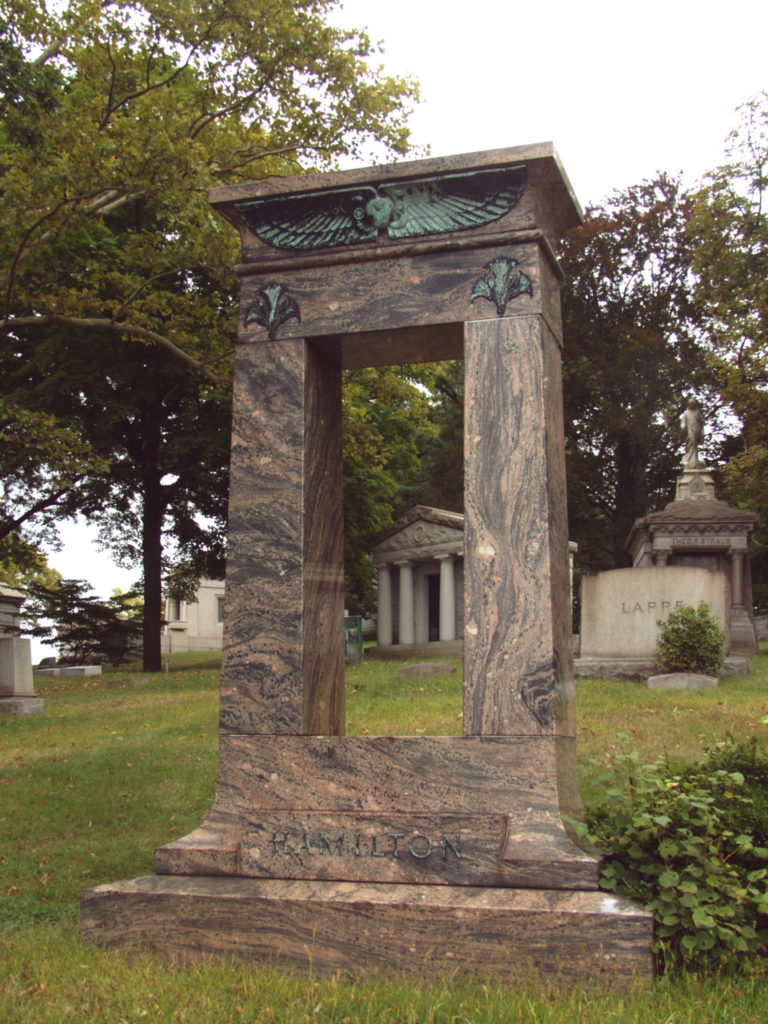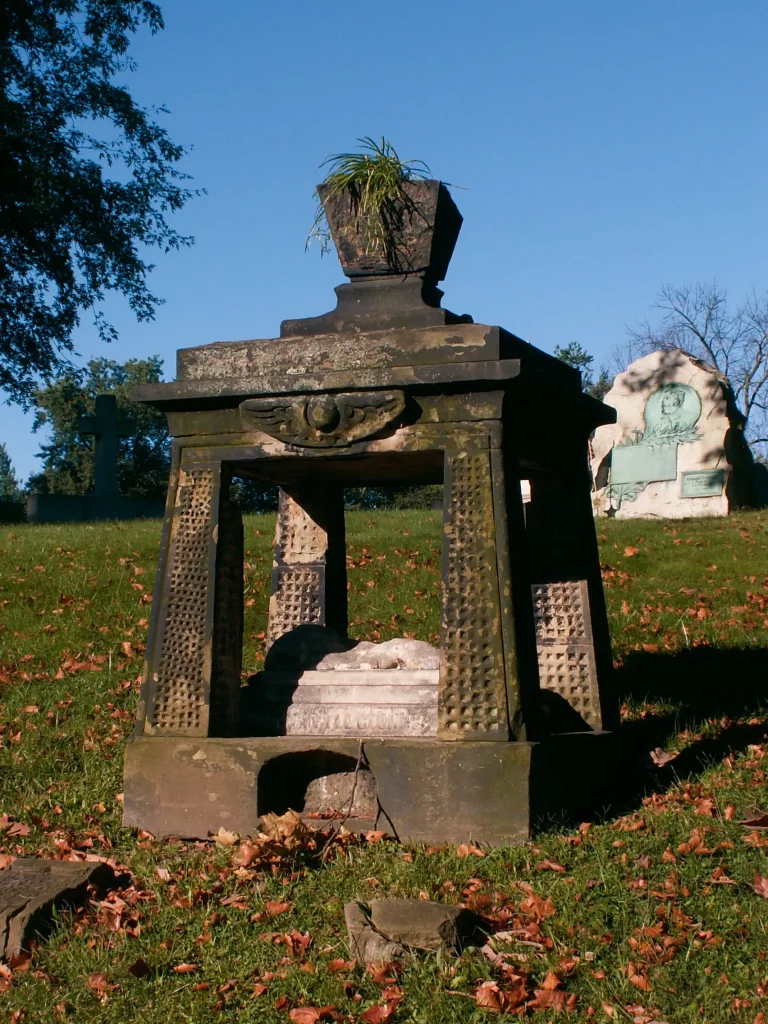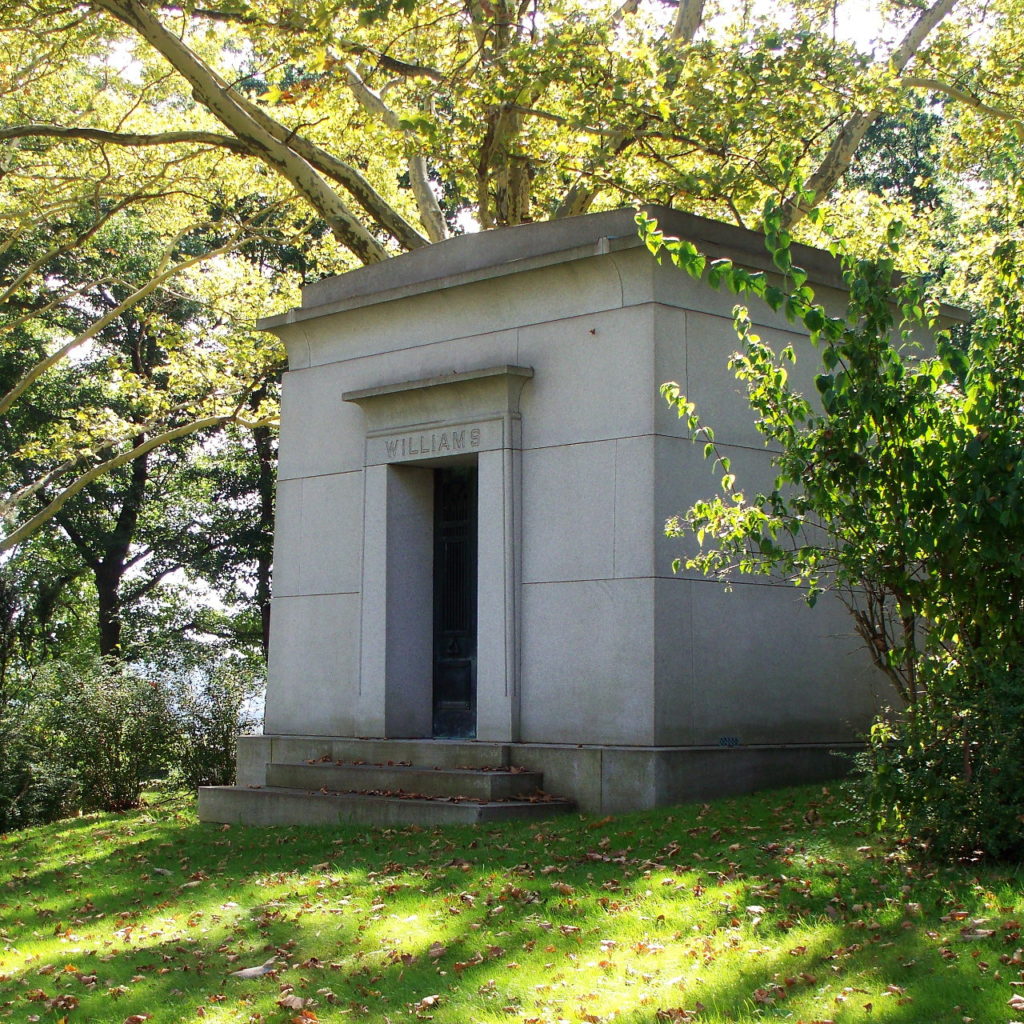
Anyone who has seen enough science-fiction television would hesitate to step through the center of this extraordinary Egyptian construction; it seems obvious that it must be some sort of time portal leading back to the days of the pharaohs, or far across the galaxy to the planet from which Egyptian architects came. The verdigris of the bronze ornamentation fits very well with the polished granite.
Alfred Reed Hamilton, who died in 1927, seems to be the earliest burial in this plot, and that sounds about right for the date of this monument.








